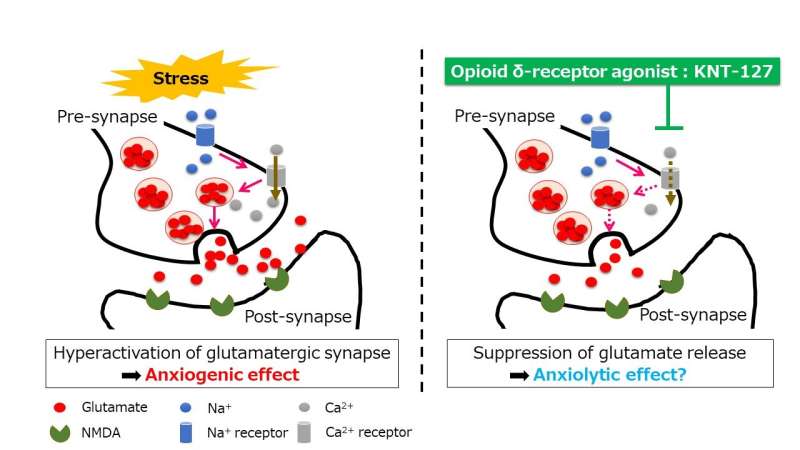
Anxiety, a feeling of fear, dread, and restlessness, is a perfectly normal reaction to stressful situations. However, a state of heightened anxiety, which is the reality for thousands of people who struggle to cope with these feelings, is called anxiety disorder. Anxiety disorder can invoke debilitating fear or apprehension, even without any immediate threat. Though intensive research over the years has yielded a plethora of information, and effective drugs like selective serotonin reuptake inhibitors have been used to alleviate this condition, a lot remains to be understood about this complex condition and its treatment.
For a group of Japanese researchers from Tokyo University of Science and University of Tsukuba, endeavoring in this line of research is not new. In a previous study, they used a drug called KNT-127, which acts by activating specific receptors in the brain, called ‘delta opioid receptors.’ The researchers found KNT-127 to reduce anxiety-like behavior in mice. They found that KNT-127 caused the reduction of an excitatory neurotransmitter, called glutamate, in the extracellular regions of a part of the brain that controls several emotional states, called the “prelimbic subregion of the medial prefrontal cortex” (PL-PFC). The researchers went on to study this phenomenon in a new study published in Biochemical and Biophysical Research Communications.
According to Professor Akiyoshi Saitoh, from the Faculty of Pharmaceutical Sciences, Tokyo University of Science, and corresponding author of this study, there is a good reason to have investigated the glutamate levels specifically in PL-PFC. He says, “The medial prefrontal cortex (mPFC) plays a vital role in the processing of emotional events. It has been shown that activation of the glutamatergic transmission in PL-PFC evoked anxiety-like behavior in rodents.”

Accordingly, Professor Saitoh and his colleagues conducted electrophysiological studies at a single-neuron level in mice. The team measured spontaneous excitatory currents from the glutamate-releasing presynapse region of various important neurons treated with and without KNT-127, in the PL-PFC of mice that had been induced to exhibit anxious behavior.
For neurons treated with KNT-127, the results showed that release of glutamate was reduced at the PL-PFC synapses. Since this excitatory neurotransmitter relays information from one neuron to the other, at the synapse region, the corresponding brain activity was also found to be lowered. Interestingly, the team found that KNT-127 treatment made the PL-PFC neurons less excitable. The researchers considered these findings to be a consequence of the anxiolytic effects of KNT-127.
Source: Read Full Article
